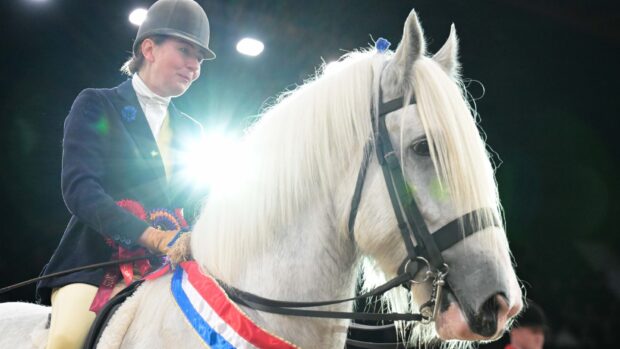The Shire horse is not a dying breed; that’s the response from the Shire Horse Society (SHS) to claims that the legendary British heavy horse is heading for extinction.
Dr Ken Young, an executive committee member of the SHS, had claimed in the national press that the number of UK breeding mares had fallen to dangerous levels in recent years, preventing the current population from replacing itself.
But Andrew Mercer, chief executive of the SHS, calls his claims “alarmist”. “Are we at crisis point? Certainly not,” Mr Mercer told H&H.
According to SHS figures, the number of UK registrations for fillies has increased from an all-time low of 146 in 2002 to 199 in 2007.
And at least two-thirds of the worldwide Shire population registered in 2007 were
bred in the UK, showing that, although foreign breeding is increasing, the British Shire is far from being overwhelmed by its cousins from abroad.
“We have arrested the long-term decline in registrations over the past 20 years and are now seeing positive signs of recovery,” said Mr Mercer.
But Dr Young insists that too many British Shires are being exported, leaving an insufficient population in the UK and diluting the breed.
“The French Percheron and those exported to Canada look noticeably different — we shouldn’t let that happen with the Shire breed,” Dr Young told H&H.
With Shire horse societies in 11 countries including the USA and Australia, the foreign export of Shires has proved successful in increasing the horses’ value.
“British animals that are exported are not lost,” said Mr Mercer. “We have been collecting semen from stallions before they are sold abroad.”
With the rise in value of the Shire, shipping semen around the globe has become a viable option, aiding the preservation of the most pure and typical bloodlines.
Yet Dr Young has criticised the SHS for not planning for the long-term.
“The Suffolk Punch and Clydesdale breeds are in a much more precarious state than the Shire, but British breed societies need to act now to prevent a similar fate,” Dr Young insisted.
Measures are being taken to preserve the future of the Shire through encouraging people to get involved with the breed.
The SHS funds presentations at equine colleges throughout the UK, promoting the breed’s versatility and its place in modern society to future generations.
Ridden classes, cross-country driving and ploughing competitions have been introduced in recent years at breed shows to help preserve the working Shire varieties that are less fashionable in the showring.
Dr Young said government investment in a national stud for Shires would prevent breeders from producing purely commercial varieties.
But the SHS said they could not spend taxpayers’ money on preserving a horse breed.
“We subsidise premium stallion owners and breeders with payouts of up to £550 per year from the Horse Race Vetting Levy Board,” Mr Mercer said. “This helps support breeders all over the country, rather than having one centralised stud.”
He added: “I would never condemn the publicity Ken has created for the breed, but
the facts were wrong and more than a little pessimistic.”
This news story was first published in Horse & Hound (27 March, ’08)



